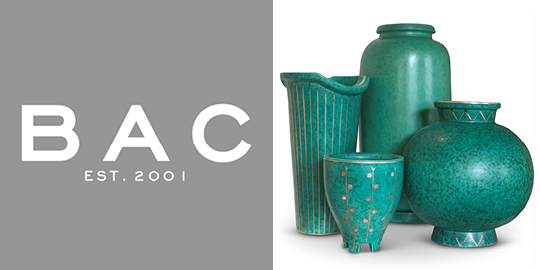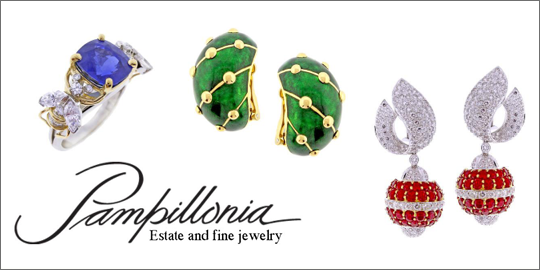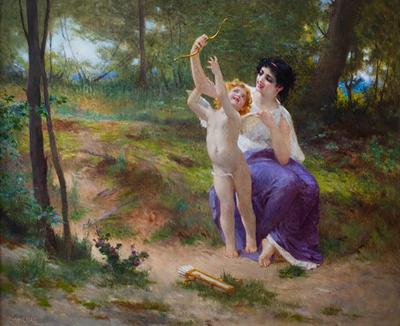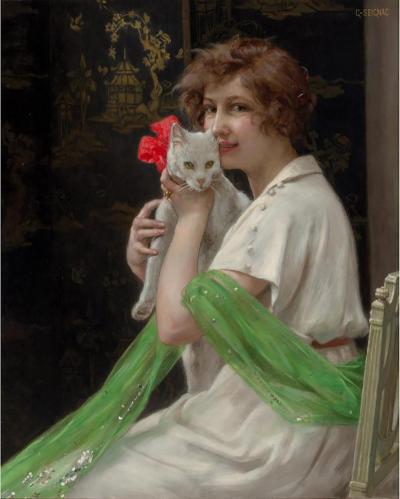Guillaume Seignac
French, 1870 - 1924
Guillaume Seignac (September 25, 1870 – October 2, 1924) was a distinguished French academic painter known for his classical themes and idealized depictions of the female form. Born in Rennes and later passing away in Paris, Seignac honed his skills at the Académie Julian from 1889 to 1895 under the guidance of renowned instructors such as Gabriel Ferrier, William-Adolphe Bouguereau, and Tony Robert-Fleury.
Seignac's artistic style is deeply rooted in classical traditions, reflecting a fascination with allegorical and mythological subjects. His works often feature elegantly draped figures, drawing inspiration from ancient Greek and Roman art. Notable for his use of diaphanous fabrics, he masterfully highlights the contours of the body beneath, reminiscent of the techniques used by sculptors like Phidias and painters such as Botticelli.
Beginning in 1897, Seignac became a regular exhibitor at the Salon des Artistes Français, garnering multiple accolades, including an honorable mention in 1900 and a Third Class medal in 1903. His artworks, often set against lush landscapes adorned with classical elements like Greek urns and Roman fountains, present idealized female figures embodying concepts such as "meditation" and "reverie."
Seignac's compositions are marked by dynamic poses that echo the contrapposto technique celebrated in Michelangelo's works, where figures are portrayed with a sense of movement and grace. His keen understanding of color harmonies, drawn from the Italian Renaissance, further enhances the beauty of his subjects.
As the vibrant art scene of fin-de-siècle Paris flourished around him, Seignac found a place among artists who balanced tradition with contemporary sensibilities. His move to the Montparnasse district in 1902 suggested a growing success, as his enchanting images of women captivated both traditional art buyers and those drawn to the emerging Art Nouveau style.
By 1907, Seignac's reputation was solidified, evidenced by a life-size bronze bust created by his friend Pierre Antoine Laurent, now housed in the Musée des Beaux-arts in Rennes. His works continued to resonate with audiences in New York and London, particularly during the pre-World War I era, when pieces like Youth and Love gained popularity.
Despite a decline in art sales during the Great Depression, interest in Seignac's work surged in the following decades. His portrayals of domestic scenes and idealized nudes have since found renewed appreciation, particularly from the 1990s onward, as the art world re-evaluates the contributions of academically trained painters. Today, Guillaume Seignac is celebrated not only for his technical mastery but also for his ability to bridge the classical past with the evolving tastes of modern audiences.
Seignac's artistic style is deeply rooted in classical traditions, reflecting a fascination with allegorical and mythological subjects. His works often feature elegantly draped figures, drawing inspiration from ancient Greek and Roman art. Notable for his use of diaphanous fabrics, he masterfully highlights the contours of the body beneath, reminiscent of the techniques used by sculptors like Phidias and painters such as Botticelli.
Beginning in 1897, Seignac became a regular exhibitor at the Salon des Artistes Français, garnering multiple accolades, including an honorable mention in 1900 and a Third Class medal in 1903. His artworks, often set against lush landscapes adorned with classical elements like Greek urns and Roman fountains, present idealized female figures embodying concepts such as "meditation" and "reverie."
Seignac's compositions are marked by dynamic poses that echo the contrapposto technique celebrated in Michelangelo's works, where figures are portrayed with a sense of movement and grace. His keen understanding of color harmonies, drawn from the Italian Renaissance, further enhances the beauty of his subjects.
As the vibrant art scene of fin-de-siècle Paris flourished around him, Seignac found a place among artists who balanced tradition with contemporary sensibilities. His move to the Montparnasse district in 1902 suggested a growing success, as his enchanting images of women captivated both traditional art buyers and those drawn to the emerging Art Nouveau style.
By 1907, Seignac's reputation was solidified, evidenced by a life-size bronze bust created by his friend Pierre Antoine Laurent, now housed in the Musée des Beaux-arts in Rennes. His works continued to resonate with audiences in New York and London, particularly during the pre-World War I era, when pieces like Youth and Love gained popularity.
Despite a decline in art sales during the Great Depression, interest in Seignac's work surged in the following decades. His portrayals of domestic scenes and idealized nudes have since found renewed appreciation, particularly from the 1990s onward, as the art world re-evaluates the contributions of academically trained painters. Today, Guillaume Seignac is celebrated not only for his technical mastery but also for his ability to bridge the classical past with the evolving tastes of modern audiences.
Guillaume Seignac
Guillaume Seignac Oil on Canvas "Good Friends" Beauty with Kitten Painting
H 28 in W 23 in DIA 1 in
